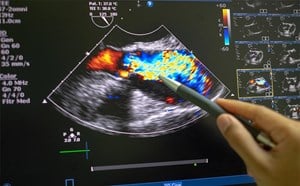
Peri-Intubation Cardiac Arrest: New Insights into an Uncommon and Potentially Preventable Cause of Mortality in Critically Ill Patients
Peri-intubation cardiac arrest (PICA) is a well-known phenomenon: experienced providers are often wary while intubating critically ill patients, and rightfully so, drawing on anecdotal evidence and personal examples of cases where a successful intubation was followed by an unsuccessful code. But how frequent is PICA and which patients are most at risk for this serious complication of a potentially lifesaving intervention? Fortunately, in the past few months, two new studies have been published that can better help providers identify which patients are at risk of PICA and provide insights into what can be done to prevent this potentially avoidable type of cardiac arrest.
What do we know about peri-intubation cardiac arrest?
There is scant data that describes the prevalence of PICA and patients most at risk for this phenomenon. It is intuitive that “sicker” patients are more likely to arrest, particularly those who are profoundly hypoxic or hypotensive patients prior to endotracheal intubation (ETI). The earliest descriptions of PICA come from anesthesiologists who found that this phenomenon is exceedingly rare in the operating room with reported rates between 0.02% to 0.05%. However, in the past five years, there has been more interest in describing risk factors and patient outcomes when ETI is performed outside of the operating room.1,2
Heffner, et al, reviewed all intubations at a single emergency department (ED) over a year and found that the prevalence of PICA was approximately 4% and that increasing shock index (SI) was associated with increasing risk of PICA, with the odds of cardiac arrest (CA) increasing 1.16 times for every 0.1 increase in SI.3 The authors suggested an SI of 0.9 as the threshold of when to intervene prior to rapid sequence intubation. The authors also found an alarmingly high mortality rate (84%) in patients who had PICA. Another study of 2,403 ED patients by Kim, et al, found that a systolic blood pressure (SBP) < 90 mm Hg had an odds ratio (OR) of 3.67 for PICA.4 Taken together, these studies make a strong case that hemodynamic instability is an important marker for elevated risk of PICA and is an area ripe for intervention and further study. A 2010 study by Jaber, et al, showed a decrease in peri-intubation hemodynamic collapse and cardiac arrest with use of a 10-point bundle, which included a crystalloid bolus and post-intubation vasopressors if indicated.5 However, this non-randomized study did not attempt to differentiate the effects of fluids and vasopressors from other items in the bundle. Evaluating whether pre-intubation correction of hemodynamic instability can decrease PICA is an area for further research.
While there are multiple reasons that the critically ill arrest after ETI, a few deserve special mention. Hemodynamic collapse occurs in patients who cannot tolerate the decrease in venous return caused by positive pressure ventilation. The loss of sympathetic tone caused by sedatives commonly used during ETI can also lead to arrest. While older studies conducted by anesthesiologists identified hypoxia as the principle cause of PICA, the increasing focus on pre-oxygenation, use of end-tidal carbon dioxide and rescue devices, providers are identifying esophageal intubations quicker and have strategies to prevent hypoxic arrests. Other potential mechanisms include arrest caused by profound acidosis in patients with inadequate ventilation following ETI, the development of profound hyperkalemia after the administration of succinylcholine, and rarely, high levels of auto-positive end expiratory pressure (auto-PEEP) generated in patients with obstructive lung disease that impede venous return.
What does the new evidence show us?
Two recent studies published this year have provided additional insight to better help identify patients who are at risk for PICA after ETI and outcome data. Wardi, et al, performed a retrospective case-control study of cardiac arrests following emergent out-of-operating room intubations (excluding patients intubated in the ED) in the UCSD Healthcare System over a four and a half year period, which was published in Resuscitation earlier in the year.6 A few months afterwards, de Jong, et al, published a retrospective multi-center cohort trial in Critical Care Medicine, designed to identify risk factors for PICA in critically ill patients intubated in multiple French ICUs.7
In both studies, patients had similar rates of return of spontaneous circulation (ROSC; 72% vs. 71%). The prevalence of PICA in ICU patients undergoing emergent endotracheal intubation was approximately 2.5% (de Jong), and almost all patients with PICA were in pulseless electrical activity (Wardi), similar to what Heffner, et al, found in the ED. Mortality in PICA was high: Wardi, et al, found a 48.3% rate of survival to discharge, with only 31% of survivors having a good neurologic outcome. De Jong found a 28-day mortality rate of 73% in patients with PICA, compared to 30.1% in patients emergently intubated without PICA and that PICA was an independent risk factor for mortality with a hazard ratio of 3.9. Importantly, mortality was not significantly different between other types of cardiac arrest and PICA in Wardi’s study and not reported in de Jong’s study.
Both studies clearly showed that hemodynamic instability was associated with PICA, with an OR for arrest of 2.67 for shock index ≥ 1.0 in the Wardi article and an OR of 3.406 for SBP<90 mm Hg in the De Jong article. De Jong also found that hypoxemia prior to intubation (OR 3.991, p<0.0001), absence of preoxygenation (OR 3.584, p = 0.0146), overweight/obesity (body mass index > 25 kg/m2; OR 2.005, p = 0.0445), and age more than 75 years old (OR 2.251, p = 0.0297) were all associated with PICA, in agreement with previous studies. Interestingly, Wardi, et al, found an interesting correlation between PICA and use of succinylcholine (OR 3.1, p = 0.036) and intubation around nursing shift change (OR 4.05, p = 0.014). These findings have not been identified in other studies and likely need further evaluation, especially the association with succinylcholine, which was based on a small number of patients.
What can be done to prevent PICA?
It has previously been said to “resuscitate before you intubate,” and these new studies clearly support this adage. Although these studies were retrospective and thus not designed to show causation, they provide mounting evidence that with improved resuscitation prior to intubation, PICA can potentially be avoided. Identification of patients at risk for PICA is essential. Fluid resuscitation and peripheral or centrally administered vasopressors can be utilized prophylactically prior to intubation to prevent PICA rather than in response to hypotension following ETI. While there is no specific SI or SBP that makes ETI “safe,” an effort should be made to correct an SI of 1.0 or SBP of 90 mm Hg or greater. Furthermore, hypoxemia should be corrected to the extent possible, and preoxygenation should be a standard part of every ETI. Since PICA and non-ETI related cardiac arrest have similar rates of survival with good neurologic outcome, when it comes to PICA an ounce of prevention may truly be worth a pound of cure.
References
- Olsson GL, Hallen B. Cardiac arrest during anaesthesia. A computer-aided study in 250,543 anaesthetics. Acta Anaesthesiol Scand. 1988 Nov;32(8):653–64.
- Keenan RL, Boyan CP. Cardiac arrest due to anesthesia: a study of incidence and causes. JAMA. 1985 Apr 26;253(16):2373–7.
- Heffner AC, Swords DS, Neale MN, et al. Incidence and factors associated with cardiac arrest complicating emergency airway management. Resuscitation. 2013 Nov;84(11):1500–4.
- Kim WY, Kwak MK, Ko BS, et al. Factors associated with the occurrence of cardiac arrest after emergency tracheal intubation in the emergency department. PLoS One. 2014 Nov 17;9(11):e112779.
- Jaber S, Jung B, Corne P, et al. An intervention to decrease complications related to endotracheal intubation in the intensive care unit: a prospective, multiple- center study. Intensive Care Med. 2010 Feb;36(2):248–55.
- Wardi G, Villar J, Nguyen T, et al. Factors and outcomes associated with inpatient cardiac arrest following emergent endotracheal intubation. Resuscitation. 2017 Dec;121:76-80.
- De Jong A, Rolle A, Molinari N, et al. Cardiac arrest and mortality related to intubation procedure in critically ill adult patients: a multicenter cohort study. Crit Care Med. 2018 Apr 1;46(4):532-9.
Michael Self, MD
Resident, Class of 2021
University of California San Diego
Gabriel Wardi, MD, MPH
Assistant Clinical Professor
Department of Emergency Medicine
Division of Pulmonary, Critical Care, and Sleep Medicine
University of California San Diego



